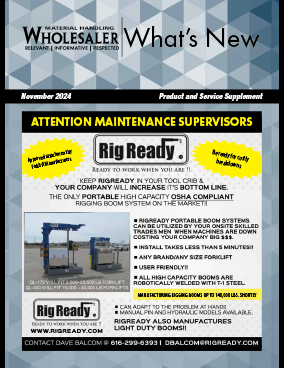Port of Long Beach documents advances, sets ambitious new environmental targets
As part of a yearlong celebration of “20 Years of Leading Green,” the Port of Long Beach has released a report offering an in-depth look at how it has earned a place as a pioneer in environmentally conscious goods movement since the Green Port Policy was adopted in 2005.
Available here, the Green Port Progress Report details the Port of Long Beach’s landmark sustainability programs and initiatives that have made it one of the world’s most environmentally friendly seaports, while outlining a path to zero emissions, including zero-emission projects that are in progress.
“Long Beach is proud of its port for building a global brand recognized for sustainability,” said Long Beach Mayor Rex Richardson. “In collaboration with its neighbors and business partners, the Port of Long Beach is driving innovation toward cleaner operations for a cleaner future. This may not be well known outside of the shipping industry and Southern California, but the Green Port Progress Report will bring more recognition to these successes.”
 “Two decades ago, the Port of Long Beach committed to a Green Port, addressing improvements to both water and air quality,” said Port of Long Beach CEO Mario Cordero. “Today, these efforts have evolved into zero-emission goals. Yet it’s undeniable we have made tremendous progress on our Green Port commitment through our air quality, water and habitat restoration programs, green construction practices, and clean energy and technology development that the public can learn about in this report.”
“Two decades ago, the Port of Long Beach committed to a Green Port, addressing improvements to both water and air quality,” said Port of Long Beach CEO Mario Cordero. “Today, these efforts have evolved into zero-emission goals. Yet it’s undeniable we have made tremendous progress on our Green Port commitment through our air quality, water and habitat restoration programs, green construction practices, and clean energy and technology development that the public can learn about in this report.”
The full spectrum of the Port’s sustainability programs, also detailed at www.polb.com/environment, has acted together to drive down emissions from port-related sources. Since 2005, these measures have cut 92% of diesel particulate matter, 71% of nitrogen oxides and 98% of sulfur oxides, while container traffic has risen 20% during the same period.
“These achievements demonstrate that clean air and cargo growth can go hand in hand, reinforcing the Port’s position as a key driver of the U.S. economy during a time of unprecedented change in the shipping industry,” said Long Beach Harbor Commission President Bonnie Lowenthal. “While we are proud of these accomplishments, the Green Port Progress Report also looks to the future.”
In 2017, in partnership with the Port of Los Angeles, the Port of Long Beach updated the Clean Air Action Plan with goals for zero-emissions operations. The Green Port Progress Report examines what the Port is doing to overcome challenges such as technology readiness, regulatory pressures, funding needs, and energy supplies in pursuit of zero-emission operations.
Future work at the Port of Long Beach includes charging stations for electric trucks, shore power expansion, hydrogen fueling facilities, charging stations for zero-emission locomotives, and more.
In addition to its efforts to clean cargo operations, the Port has also committed $65 million to the Community Grants Program, funding local projects aimed at improving environmental health for communities around the Port.
In 2005, the Harbor Commission enacted the Green Port Policy, which has led to aggressive, industry-leading programs to improve air and water quality, protect marine wildlife and implement sustainable practices while engaging and educating the community.












